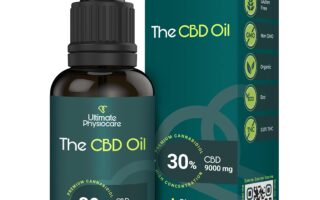Exploring the Hidden Corners: The Side Effects of THC
As the light of cannabis legalization continues to spread across various corners of the globe, a growing body of research is illuminating both the celebrated benefits and the less-discussed side effects of its prominent compound, tetrahydrocannabinol (THC). Often heralded for its therapeutic potential—ranging from pain relief to anxiety reduction—THC occupies a complex space in our understanding of health and wellness. But like any powerful substance, its effects can extend beyond the intended. In this article, we delve into the nuanced landscape of THC’s side effects, unpacking everything from common experiences to less familiar reactions. Join us as we navigate through various perspectives and insights, shedding light on what users should watch for in their journey with this multifaceted compound.
Table of Contents
- Understanding the Spectrum of THC Side Effects
- The Impact of Dosage and Consumption Methods
- Navigating Mental Health Risks Associated with THC
- Practical Tips for Mitigating Adverse Reactions
- Q&A
- In Conclusion
Understanding the Spectrum of THC Side Effects
Delving into the various effects of THC invites a spectrum of experiences, both pleasant and challenging. The neuroactive component of cannabis, THC interacts with the endocannabinoid system, enhancing certain sensations while also potentially triggering negative reactions. Users may encounter a range of effects, including:
- Relaxation: Many find relief from stress and anxiety, feeling more at ease.
- Euphoria: An increased sense of happiness or heightened mood can be experienced.
- Appetite Stimulation: Often colloquially referred to as the ”munchies,” this effect can lead to cravings for food.
- Altered Perception: Time distortion and enhanced sensory perception are common experiences.
- Short-term Memory Impairment: Difficulty recalling recent events or information can occur.
However, not all experiences are favorable. Some users report negative effects that can arise, particularly with high doses or inexperienced use. These adverse reactions include:
- Paranoia: A heightened sense of anxiety leading to feelings of mistrust.
- Dizziness: Some individuals may feel lightheaded or unsteady.
- Dry Mouth: Often referred to as “cottonmouth,” a common sensation among cannabis users.
- Increased Heart Rate: Fluctuations in heart rate can cause concern for some users.
- Greening Out: Overconsumption can lead to nausea and dizziness, commonly known as greening out.
The Impact of Dosage and Consumption Methods
Understanding the side effects of THC involves examining how both the dosage and method of consumption can significantly influence the user’s experience. Higher doses tend to manifest more pronounced effects, often leading to symptoms such as anxiety, dizziness, or paranoia. In contrast, smaller doses may provide relief from discomfort without overwhelming the user. It’s crucial for individuals to start low and go slow, allowing themselves to gauge their body’s reactions. This approach helps to minimize unwanted side effects while maximizing therapeutic benefits.
The method of consumption also plays a pivotal role in the overall experience. Here are a few common consumption methods, along with their potential impacts on side effects:
- Inhalation: Smoking or vaping delivers THC quickly to the bloodstream, often producing rapid onset effects but can lead to acute anxiety in some users.
- Edibles: Consuming THC-infused foods results in a slower onset, lasting effects; however, users may inadvertently consume too much, leading to overwhelming side effects.
- Tinctures: These allow for precise dosing and quicker absorption than edibles while offering a smoother experience for many.
| Method | Onset Time | Duration |
|---|---|---|
| Inhalation | Immediate | 1-3 hours |
| Edibles | 30 minutes – 2 hours | 4-8 hours |
| Tinctures | 15-45 minutes | 2-6 hours |
Navigating Mental Health Risks Associated with THC
When using THC, it is crucial to understand the potential mental health risks that may arise. Users often report experiencing a plethora of effects that can vary widely depending on individual sensitivity, dosage, and frequency of use. Some potential risks include:
- Anxiety: Elevated THC levels can exacerbate feelings of anxiety or panic, particularly in new users or those predisposed to anxiety disorders.
- Paranoia: Some users may experience heightened paranoia, potentially leading to distressing thoughts and behaviors.
- Cognitive Impairment: Regular use may affect memory and cognitive function, making it difficult to focus and retain information.
- Psychosis: High doses can trigger temporary psychotic symptoms, especially in individuals with a history of mental illness.
| Mental Health Risk | Possible Symptoms |
|---|---|
| Anxiety | Restlessness, increased heart rate, sweating |
| Paranoia | Excessively suspicious thoughts, feeling watched |
| Cognitive Impairment | Memory loss, difficulty concentrating |
| Psychosis | Delusions, hallucinations |
Awareness and education are crucial for mitigating these risks. Users should consider their mental health history and consult with healthcare professionals when incorporating THC into their routine. Recognizing personal limits and consuming responsibly can significantly reduce the likelihood of adverse effects. Engaging in practices such as mindfulness, meditation, and open discussions about mental health can also support emotional well-being while using THC.
Practical Tips for Mitigating Adverse Reactions
When using THC products, it’s essential to be aware of potential side effects and take proactive measures to mitigate them. Staying hydrated is crucial; drinking plenty of water can help alleviate feelings of dryness or discomfort often associated with THC consumption. Additionally, consider monitoring your dosage carefully. Starting with a low dose allows you to gauge your body’s reaction and increases the likelihood of a more enjoyable experience. Keeping a journal to track effects can help identify personal thresholds and preferred consumption styles.
Another effective strategy is to choose your environment wisely. Using THC in a familiar and comfortable setting can reduce anxiety and enhance relaxation. Engaging in activities that promote calmness, such as listening to soothing music or practicing deep breathing exercises, can also be beneficial. Moreover, surrounding yourself with supportive friends who understand your experience can make a big difference. In case of any adverse reaction, having a plan in place—such as knowing counteractive remedies like black pepper or CBD oil—can help manage discomfort swiftly.
Q&A
Q&A on the Side Effects of THC
Q: What is THC, and how does it affect the body?
A: THC, or tetrahydrocannabinol, is the primary psychoactive compound found in cannabis. When consumed, it binds to the brain’s cannabinoid receptors, leading to effects such as euphoria, relaxation, and altered perception. However, its interaction with the endocannabinoid system can also result in various side effects.
Q: What are some common side effects of THC?
A: Common side effects include increased heart rate, dry mouth, bloodshot eyes, and impaired memory. Users may also experience heightened anxiety or paranoia, especially in higher doses or among those predisposed to anxiety disorders.
Q: Why does THC cause dry mouth?
A: THC impacts the salivary glands, reducing saliva production, which is why many users report a dry mouth or “cottonmouth.” Staying hydrated and drinking water can help mitigate this effect.
Q: Can THC affect mental health?
A: Yes, while many use THC to alleviate stress or anxiety, it can paradoxically heighten anxiety in others. For some individuals, especially those with a history of mental health issues, THC may trigger paranoia or exacerbate conditions such as schizophrenia.
Q: Is it true that THC can impair cognitive function?
A: Indeed. THC can temporarily impair short-term memory, attention, and coordination. These cognitive effects can last for hours after consumption, which is why it’s advised not to drive or operate heavy machinery under its influence.
Q: Are there any long-term side effects associated with THC use?
A: Long-term use of THC has been linked to potential issues such as cannabis use disorder, respiratory problems (when smoked), and diminished cognitive function in chronic users, particularly when begun in adolescence. Longitudinal studies are ongoing to better understand the lasting impact of THC.
Q: How do side effects of THC vary by method of consumption?
A: Yes, different consumption methods produce varied effects. Smoking or vaping can lead to rapid onset of effects but may come with more immediate respiratory irritations. Edibles might delay onset of effects, leading users to consume more than intended, which can heighten side effects.
Q: What can users do to minimize side effects?
A: To minimize side effects, users are encouraged to start with low doses and choose strains that are lower in THC and higher in CBD, which can balance out the psychoactive effects. Staying hydrated, consuming in a safe environment, and taking breaks can also help.
Q: Are the side effects of THC the same for everyone?
A: Not at all! Individual responses to THC can vary widely based on factors like genetics, previous experience with cannabis, mental health status, and even the setting in which it’s consumed. What might be a pleasurable experience for one person could be overwhelming for another.
Q: What should someone do if they experience unpleasant side effects from THC?
A: If someone experiences discomfort, finding a quiet, comfortable space can help. Deep breathing, hydration, and sometimes consuming a small amount of CBD can mitigate anxiety. If symptoms persist or become severe, seeking medical attention is recommended.
Q: Is it safe to use THC recreationally?
A: While many people safely enjoy THC recreationally, it’s essential to approach it with caution. Understanding one’s limits, being aware of legal implications, and recognizing personal health issues can lead to a more enjoyable and safer experience. Always prioritize informed and responsible consumption.
—
By addressing these questions, readers can gain a clearer perspective on the multifaceted effects of THC, enabling informed choices about its use.
In Conclusion
As we venture through the intricate landscape of THC and its multifaceted effects, it’s clear that while this compound can offer a spectrum of benefits, it also brings along a collection of potential side effects that warrant careful consideration. Just as the sun casts shadows alongside its light, the therapeutic allure of THC is accompanied by risks that might not be immediately apparent.
Navigating the world of cannabis requires mindfulness and education, empowering individuals to make informed decisions that align with their health and wellness goals. By understanding both the positives and negatives, users can harness the benefits of THC responsibly, ensuring a balanced approach that respects the body’s complex reactions.
knowledge is akin to a compass, guiding us through the nuanced terrains of modern wellness. So, as you continue your journey, remember to listen to your body, seek professional guidance when needed, and above all, approach each experience with curiosity and caution. The world of THC is vast, and with each informed choice, you can illuminate your path toward a more comprehensive understanding of this powerful compound.


